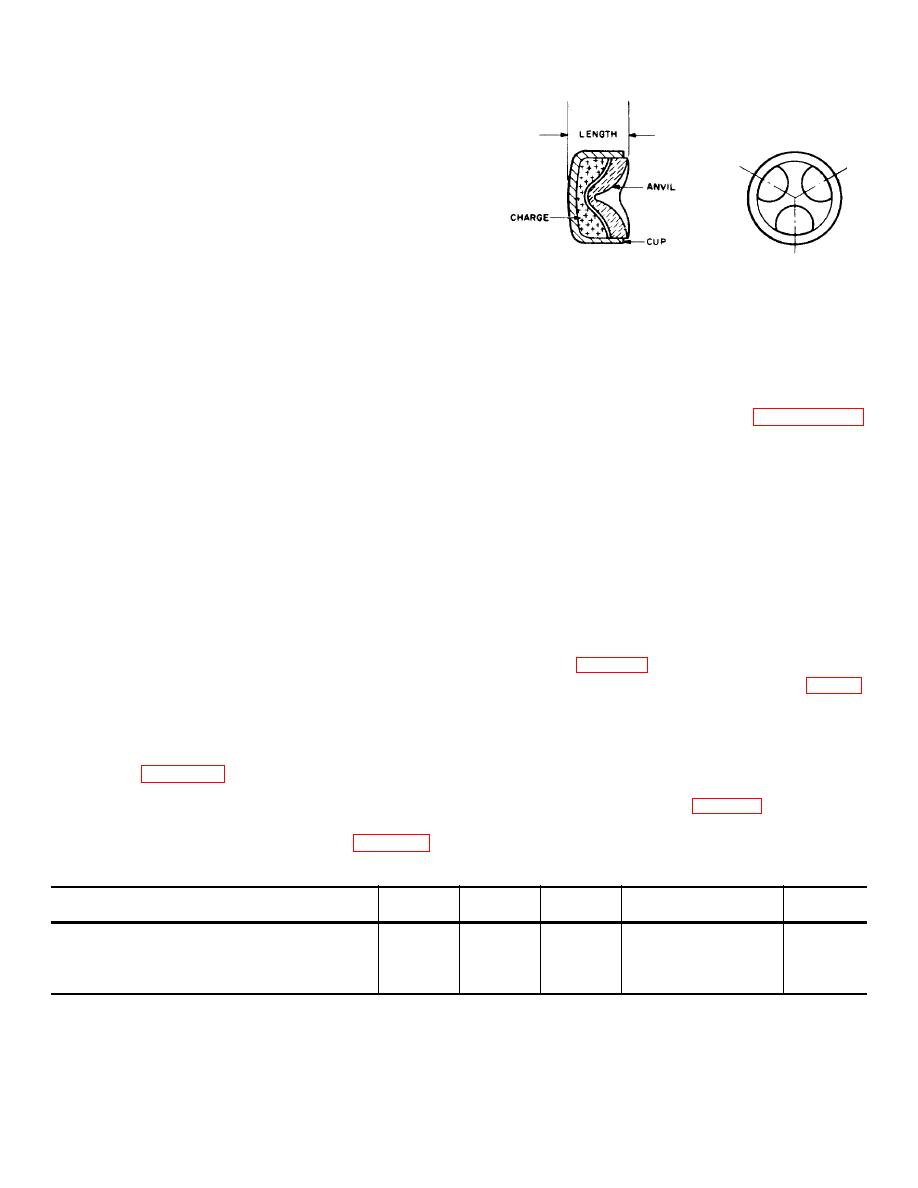
(2) If no difficulty is anticipated in staying
within the envelope specified, it may be
advantageous at the start of mechanical
design, to tentatively select a cartridge
case and build the chamber and body
around it. The selection of a case is
based on the volume of the propellant
which it must contain and on its estimated
diameter.
The diameter may be set
provisionally according to the limitations
of final envelope size. Propellant volume
Figure 28. Percussion primer.
may be computed from the propellant
grain dimensions. A propellant density of
(2) The sensitivity of primers, as measured
0.06 pound per cubic inch may be used
by all fire height, which varies from one
with most compositions and large grain
model to another, must be determined in
configurations.
accordance with established test methods.
e. Cartridge Head.
The size of the firing pin and the depth of
indent necessary to fire these percussion
(1) The head of the cartridge, generally made
primers is discussed in paragraph 40,
of aluminum and grooved to accept an O-
firing mechanism.
ring to seal the cartridge, contains a
percussion-type primer or a tapped hole to
e. Cartridge Seals.
accept an electric ignition element. When
(1) The cartridge must be hermetically sealed
a percussion primer is inserted in the
to permit storage for as long as .3 years
center hole of the head, the edges of the
without affecting ballistic performance.
head, adjacent to the primer, are crimped
As previously described, the primer is
to seal the cartridge. In addition, lacquers
separated from the propellant by a thin
or silicone sealants can be used.
web at the base of the cartridge head. An
(2) The base of the cartridge head, under the
O-ring between the head and the cartridge
primer recess, is machined to a thickness
case completes the propellant chamber
between 0.006 and 0.010 inch to insure
seal, and a crimp around the primer
that it will "blow through" when the primer
completes its seal. Methods of testing
fires. Prior to cartridge actuation, this thin
cartridges for leaks are described in
web separates the primer from the
propellant or igniter, since the volatile
(2) The feasibility of a new design (fig. 29)
chemicals of these may desensitize the
which uses extrusion cold-weld seals and
primer mixture if permitted to come in
eliminates all nonmetallic parts of the
contact with it.
cartridge is being studied. This design
d. Primers.
promises to provide a seal far superior to
any now used. Other designs eliminating
(1) Figure 28 shows a typical percussion
nonmetallic parts but relying on lap welds
primer.
The
dimensions
and
are illustrated in figure 30. This continued
compositions of the four primers in
research indicates the importance of
common use in propellant actuated
sealing problems in cartridges.
devices are presented in table IX.
Table IX. Percussion Primers Used in Propellant Actuated Devices
Designation
OD (in.)
Length (in.) Charge weight
Composition
All fire energy
(grains)
(in. oz)
M29A1 .............................................................
0.205
0.115
0.42
5061 Rem .................
18
M42..................................................................
0.170
0.115
0.33
WC #793 ..................
26
72M..................................................................
0.212
0.125
0.55
5061 Rem ................
60
50M..................................................................
0.317
0.225
2.20
5061 Rem ................
120
36


